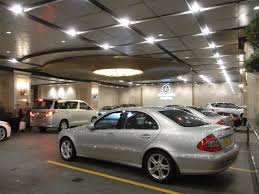 By. Ramesh S. Prabhu .
By. Ramesh S. Prabhu .
To ascertain the true results of a Society for a particular period it is very important that all expenses are properly classified between Revenue and Capital. For this purpose, some broad guidelines have been given below which are not exhaustive but only indicative of the basis to be followed.
CAPITAL EXPENDITURE:
Capital expenditure usually provides benefits over a long period of time. In other words, the benefit of this expenditure is not exhausted in the year in which the expenditure has been incurred but is available over a number of years. i.e. It affects the future periods. The following are usually treated as capital expenditure.
1) Expenditure which results in creating or acquiring a permanent asset e.g. land, building, machinery etc.
2) Expenditure in connection with the purchase, receipt or erection of a fixed asset e.g. expenses on the erection of plant and machinery, import duty paid, inters on the loan raided to purchase a fixed asset etc.
3) Expenditure in connection with extension or improvement of fixed assets resulting in increase in profit earning capacity e.g. amount spent on increasing the seats in the cinema hall.
4) Major repairs and replacement of parts which leads to increased efficiency of a fixed asset.
5) Expenditure incurred to acquire the right to carry on a business e.g. patent right, copyright, trade mark etc.
6) Expenditure incurred on a second-hand or used asset to restore its operational efficiency e.g. overhaul of a second-hand machine, that is to say that all amount spent upto the point as assests is ready for use.
REVENUE EXPENDITURE:
Revenue Expenditure usually provides benefit over a short period of time. In other words, the benefit of this expenditure is not likely to be available for more than one year.
It affects the income of the current period. The following are usually treated as revenue expenditure:
1) Expenses incurred in the ordinary course of business eg. Rent, salaries etc.
2) Expenses incurred to maintain the business e.g. replacement for maintaining the existing permanent assets, cost of stores consumed in the course of manufacturing.
3) Cost of goods purchased for resale.
4) Depreciation on fixed assets.
DEFERRED REVENUE EXPENDITURE
At times, certain expenditure of revenue nature is incurred which is unusually heavy and its benefit is likely to be available for number of years. In such a case, it is considered appropriate to spread the cost of this expenditure over a number of accounting year. This type of expenditure is known as “Deferred Revenue Expenditure” E.g. Preliminary Expenses, brokerage on issue of shares, debentures etc.
CAPITAL AND REVENUE RECEIPTS
It is very important to differentiate between income and other receipts (Capital Receipts) to ascertain true profits of a business. Some important factors guiding classification of receipts between capital can revenue nature are given below.
-If the receipt is commercial in nature yielding income, it is revenue but if it is received as a result of parting some property it is a capital receipt.
-A receipt on account of current assets such as stock, debtors etc, is a revenue receipts while receipts on account of fixed asset is a capital receipt.
-Where the receipt is in lieu of a source of income, it is a capital receipt but any other periodic receipt from such source on a regular basis while keeping the source intact is a revenue receipt.


